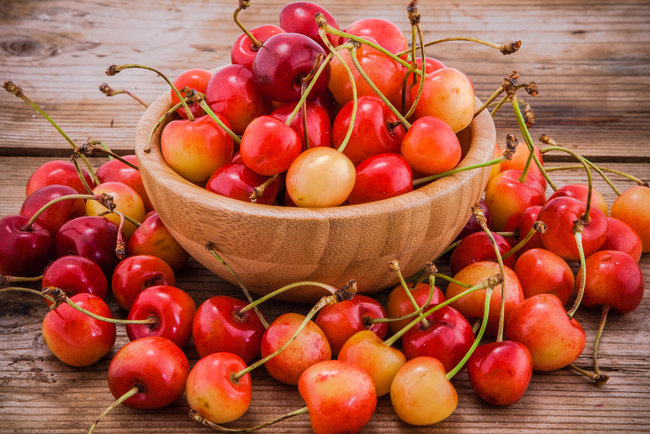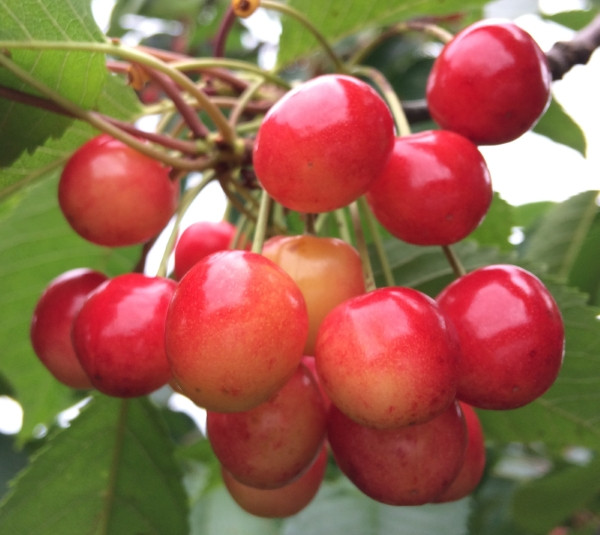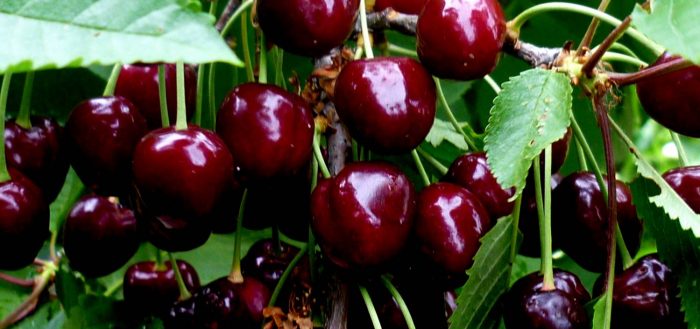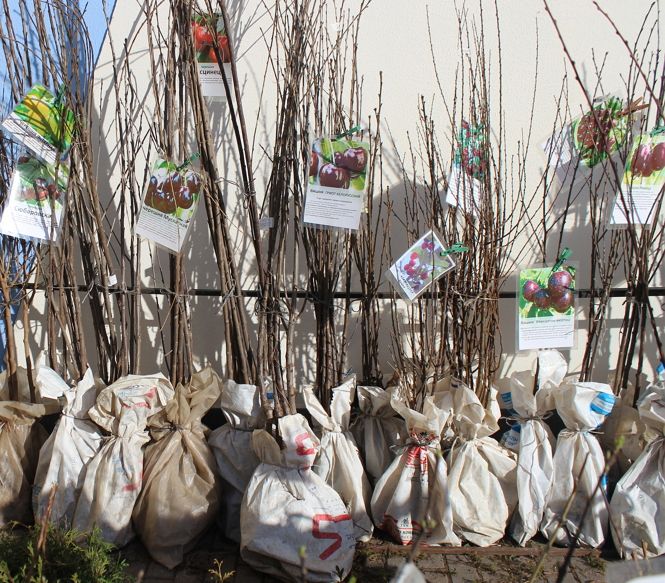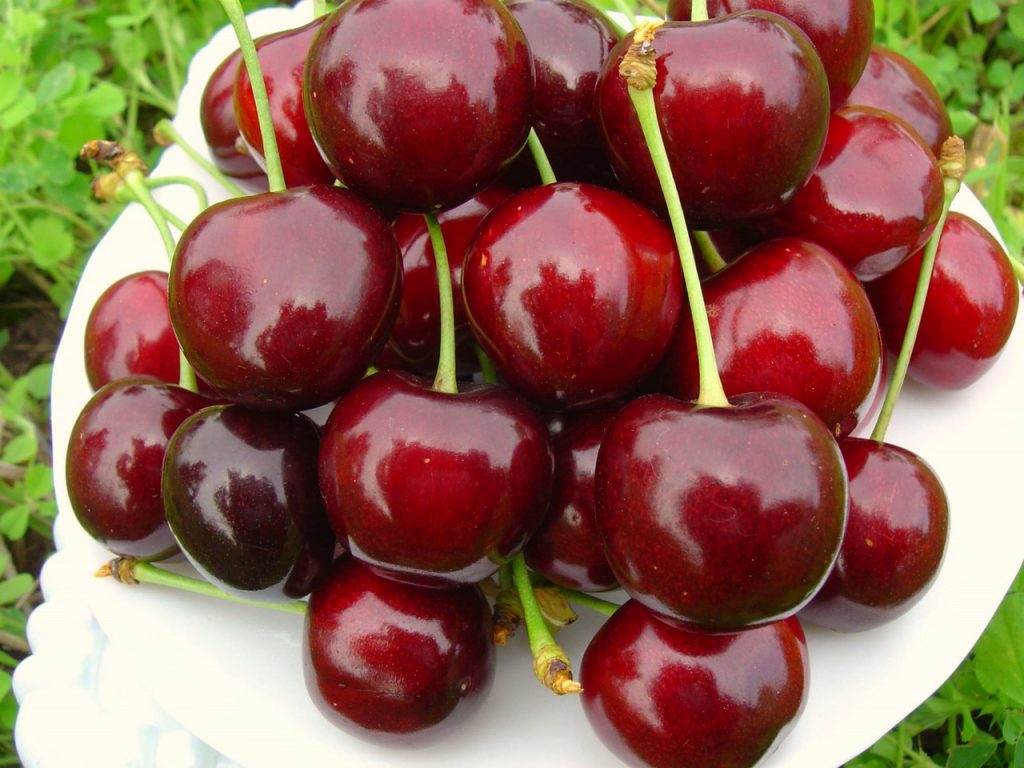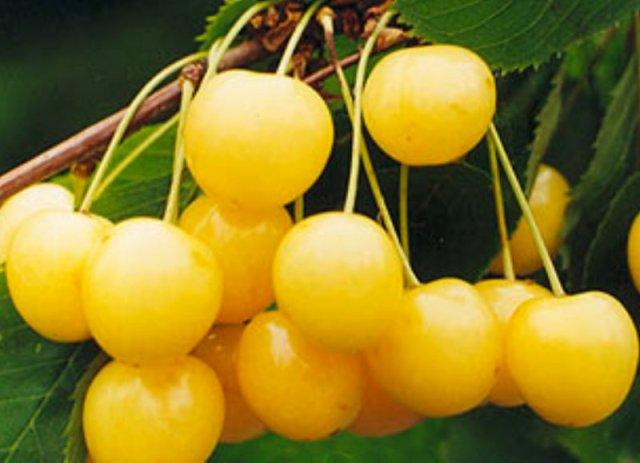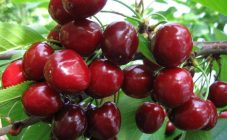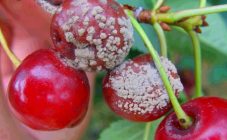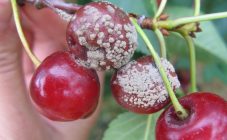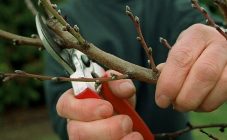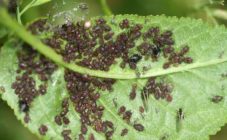Content:
Among the late varieties of cherries among domestic summer residents, the following are most popular: Revna, Bryanskaya Rozovaya and Tyutchevka. These varieties give a good harvest and are easy to care for. Of course, many other berries and fruits ripen in the middle of summer, but still the bright, rich taste of late cherries will not leave anyone indifferent.
Cherry Revna
This variety was bred specifically for the Central region, but is well suited for other areas of the Central strip.
Description:
- tree height up to 5 m;
- sparse crown in the form of a pyramid;
- fruit color is dark red;
- fruit weight 5 - 8 gr.
From one tree, you can collect up to 30 kg of berries per season. However, inexperienced gardeners often plant this variety separately and do not understand why it produces poor fruit. The fact is that a pollinator is needed for successful fruiting; without a pollinator, you can get only 5% of the possible amount of berries. Tyutchevka, Raditsa, Iput are suitable as pollinators. The highest yield is obtained if the Iput cherry is a pollinator.
It is practically not affected by diseases, sometimes it is affected by aphids and weevils. It happens that a cherry fly starts up in the berries. This species loves increased watering and fertile soil.
Main advantages:
- frost resistance;
- sweet taste;
- good productivity;
- immunity to disease.
Of the shortcomings, it should be noted. That the tree begins to bear fruit only at 5 years old.
Bryansk Pink
Developed specifically for the Central Region. Initially, the variety, as the name implies, was grown in Bryansk, later it spread throughout the middle lane. This late cherry also grows well in more northern regions.
Description:
- tree height 4.5 m;
- dense crown in the form of a pyramid with a wide base;
- fruit weight 5.5 g;
- the color of the fruit is pink;
One tree can be harvested from 20 to 30 kg of berries per season. A pollinator is needed for good fruiting. It is necessary to plant cherry trees that act as pollinators at a sufficient distance from each other, since cherries love space, do not tolerate crowding and limited space. Such varieties as Tyutchevka, Iput, Ovstuzhenka are suitable.
The branches are not affected by frostbites. Wood and buds also tolerate frost well.
The plant practically does not suffer from fungal diseases. Grows well in acidic soils. The crown needs regular pruning.
Main advantages:
- immunity to disease;
- berries are well stored and look beautiful;
- good productivity;
- unpretentious care.
Cherry Tyutchevka
It was bred for the weather conditions of the Central region, but later it was successfully adapted for growing in the Urals. It grows well in the middle zone of the country, easily adapts to any climate.
Description:
- tree height up to 6 m;
- sparse crown in the form of a regular ball;
- berry weight up to 7.5 g;
- the color of the berries is red speckled.
The variety has a high yield. The tree tolerates frost well. With proper agricultural technology, one tree can produce up to 40 kg of fruit. Cherry Tyutchevka is partially self-fertile. From pollinators, such varieties of cherries as Iput, Raditsa, Revna are suitable.
Such a phenomenon as double cherries is often observed: berries that have grown together with each other. This mutation occurs from a lack of moisture and nutritional deficiencies. If such berries are often encountered during harvest, it is time to think about increasing watering and additional feeding.
The tree often suffers from fungal diseases, sometimes (in humid weather) gray rot of the fruit is noted. This variety prefers neutral or alkaline soils and can thrive on nutrient-poor soil.
Among the mandatory care measures are the fight against fungal diseases, pruning and spraying from pests. This variety does not like excess moisture, so watering should be moderate.
The following advantages should be noted:
- sweet taste of berries;
- flower buds tolerate frost well;
- the tree is not demanding for feeding;
- the plant has a good yield;
- cherries are not demanding on moisture.
Among the shortcomings, it should be noted susceptibility to fungal diseases and the fact that cracks appear on the berries from excess moisture.
Planting recommendations for late varieties
Sweet cherries are very fond of warmth, so they need to be planted in the spring, when the threat of sudden frosts has finally passed.
It is best to purchase seedlings in a nursery or from experienced gardeners. You need to buy only those shoots that have not yet opened their buds.
The pit for planting cherry trees must be prepared in the fall, during the autumn digging of the garden. The nutrient mixture that is placed in the pit should be stored in a cold place, such as a basement. The main thing is that the room is closed and sunlight does not penetrate there. However, if the basement is damp, it is categorically impossible to store the soil mixture there: this can lead to the spread of the fungus.
Inexperienced growers are often faced with cases of fraud in the seedling market. The scheme is quite simple: the seller takes any seedling intended for cultivation in the south, and says that it is zoned for the Middle Lane. Therefore, before making a purchase, it is better to consult with a specialist and study specialized literature. It is also necessary to carefully read the information on the label that comes with the seedling.
Interesting Facts
A few interesting facts for those who want and are ready to grow cherries.
The largest cherry
The largest sweet cherry in the world is considered a variety, the name of which speaks for itself - "Large-fruited". This variety was developed in the Ukrainian city of Melitopol.
The size of the fruit reaches 2 cm in diameter. Released in the late 1980s. Due to its large berry size, this variety is often grown for sale. The largest cherry is distinguished by its dessert taste and rich bright red color of berries; it can be easily recognized in the photograph.
According to some sources, this is the largest sweet cherry in the world. There are other large varieties of cherries, but their berries look less impressive.
The sweetest cherry
Keep in mind that the biggest berry is not always the sweetest. The sweetest variety is Yellow Cherry.
In addition to a pronounced dessert taste, its fruits are distinguished by an unusual color.Yellow cherries are beautiful and contain a lot of vitamins. However, due to the increased sweetness, the fruits of the Yellow Cherry often become a “tasty morsel” for blackbirds and cherry flies.
In addition, berries deteriorate quickly and do not tolerate transportation well. But they are great for home preservation: making compotes, preserves and jams.
The latest cherry variety
The latest variety is Melitopolskaya dense. The fruits reach full maturity only in the second decade of July. Conveniently, the berries ripen together, so you can harvest quickly and without hassle.
This variety has berries with a firm, elastic pulp, they are well stored and can be well transported over long distances. This variety is often grown for sale. Melitopol dense cherry is large and beautiful, it has a sweet taste with a barely noticeable acidity.
Planting late cherries is a great way to prolong the pleasure of enjoying the aromatic, tasty berries for a long time. In order for late varieties of sweet cherries to please with the harvest, you need to choose a variety that is suitable for the climatic conditions of a particular region.
